- News
- Reviews
- Bikes
- Accessories
- Accessories - misc
- Computer mounts
- Bags
- Bar ends
- Bike bags & cases
- Bottle cages
- Bottles
- Cameras
- Car racks
- Child seats
- Computers
- Glasses
- GPS units
- Helmets
- Lights - front
- Lights - rear
- Lights - sets
- Locks
- Mirrors
- Mudguards
- Racks
- Pumps & CO2 inflators
- Puncture kits
- Reflectives
- Smart watches
- Stands and racks
- Trailers
- Clothing
- Components
- Bar tape & grips
- Bottom brackets
- Brake & gear cables
- Brake & STI levers
- Brake pads & spares
- Brakes
- Cassettes & freewheels
- Chains
- Chainsets & chainrings
- Derailleurs - front
- Derailleurs - rear
- Forks
- Gear levers & shifters
- Groupsets
- Handlebars & extensions
- Headsets
- Hubs
- Inner tubes
- Pedals
- Quick releases & skewers
- Saddles
- Seatposts
- Stems
- Wheels
- Tyres
- Health, fitness and nutrition
- Tools and workshop
- Miscellaneous
- Buyers Guides
- Features
- Forum
- Recommends
- Podcast
review
£1,249.00
VERDICT:
A highly competent aluminium disc brake cyclo-cross bike with a lot going for it – aside, maybe, from the paint job
Weight:
9,630g
Contact:
At road.cc every product is thoroughly tested for as long as it takes to get a proper insight into how well it works. Our reviewers are experienced cyclists that we trust to be objective. While we strive to ensure that opinions expressed are backed up by facts, reviews are by their nature an informed opinion, not a definitive verdict. We don't intentionally try to break anything (except locks) but we do try to look for weak points in any design. The overall score is not just an average of the other scores: it reflects both a product's function and value – with value determined by how a product compares with items of similar spec, quality, and price.
What the road.cc scores meanGood scores are more common than bad, because fortunately good products are more common than bad.
- Exceptional
- Excellent
- Very Good
- Good
- Quite good
- Average
- Not so good
- Poor
- Bad
- Appalling
Giant's TCX SLR 1 is a well-specced and very fine handling cyclo-cross bike. It's ideally suited to anyone looking to take up 'cross racing this winter, where the fast and stable handling is right at home on a tight and twisty course, but it's equally at home as a rugged winter/commuter bike for predominantly road use.
Giant is the world's largest bicycle manufacturer and it is one of the companies that has really got behind disc brakes, first on cyclo-cross bikes but also more recently on its updated Defy endurance road bike range.
> Find your nearest dealer here
Giant also has the honour of having one of its sponsored racers being the first to win a UCI Cyclo-cross World Cup race on a disc-equipped bike, proving that disc brakes can cut it at the pointy end of the sport, even if they are still outnumbered by bikes with cantilever brakes. It's a different story in the amateur ranks, where disc brakes are proving very popular.
Half a monkey above a grand, this TCX SLR 1 offers an aluminium frame, carbon fibre fork with 15mm thru-axle, Shimano 105 groupset and TRP Spyre mechanical disc brakes. The finishing kit is Giant branded, and the Maxxis tyres are suitable for a British winter of mud.
Ride and handling
For a bike that shares DNA with a cyclo-cross world cup winning bike, it's no surprise that the TCX SLR 1 has very race-focused handling. It's fast and nimble around a typical cyclo-cross race course packed with tight corners and hairpin turns. On the flip side, when the course opens up and the speeds increase, it's composed and very stable, especially when rattling over bumpy fields and rough tracks.
The geometry is very similar to the Specialized Crux I recently tested, but the Giant has a smidgen longer wheelbase and chainstays. That slight difference lends the Giant more stability at higher speeds or when descending slippery slopes, and makes it feel a bit easier to ride.
Aluminium provides a high level of stiffness and it's well suited to cyclo-cross. The demands of a typical 'cross course require lots of sudden accelerations from low speeds, and the last thing you want is a frame twisting and flexing under load. The TCX sprints aggressively and authoritatively out of low-speed corners, and the front end, with the tapered head tube, carbon fork and 15mm thru-axle, feels taut when you're heaving heavily on the handlebar.
Giant's D-shaped composite seatpost, the D-Fuse, along with a seat clamp integrated into the top tube to provide more exposed post, provides noticeable deflection when bumping and grinding along a rough track. It's not a chalk and cheese difference, but you do notice it on firmer ground with higher tyre pressures. It's subtle but welcome vibration absorption.
Giant recognises that a lot of people buy a cyclo-cross bike for the ruggedness that makes them ideally suited to winter road training and commuting. There's certainly clearance for mudguards, and eyelets on the rear dropouts. It'll even take a rack with an adaptor supplied with the bike.
With a change of tyres (I opted for Panaracer's excellent Gravel King) the TCX makes a fine road bike. The gearing does limit top-end acceleration, but cruising along at 17-20mph is just fine. The TCX is comfortable on longer rides, and very steady on rougher roads or when negotiating steep and leaf-covered country lanes.
The mechanical disc brakes don't provide the same power as hydraulics, but they work adequately in a range of conditions. Best of all, whether it's cyclo-cross racing or road riding, the brakes aren't as easily fouled by rain and mud as rim brakes. The huge clearance between tyre and frame is ideal for tackling mud-covered lanes as well.
Frame and equipment
I have to admit, the TCX is a really good looking bike. It's a bit of a love it/hate it paint job, though it does grow on you, but the shape of the tube profiles, from the oversized and flattened down tube to the slender top tube and the clean seat tube junction, creates a particularly eye-catching profile. It looks purposeful, as a cyclo-cross bike should do.
The frame is made from Giant's own ALUXX SLR triple butted aluminium and it's joined up front by a composite carbon fork, including a carbon steerer tube. The tapered steerer tube is Giant's OverDrive 2, which features a 1 1/4in top and 1 1/2in bottom bearing. That means none of your own 1 1/8in stems will fit, but the benefit, according to the company, is a 30 per cent increase in torsional stiffness. Tricky to assess that difference in real-world testing, though, and it's telling that Giant has since dropped OverDrive 2 from some of its latest mountain bikes.
The Giant uses a thru-axle of 15mm diameter while some other manufacturers are going down the 12mm thru-axle route – which some propose is going to become a universal specification on future disc brake road bikes. Giant has stopped short of using a rear thru-axle.
Gear and brake cables are neatly routed inside the down tube, which helps prevent the cables fouling in really muddy conditions – and protects them from the jetwash... The front brake cable is routed externally along the rear of the carbon fork. It's not as pretty as being routed inside the fork, but does offer easy maintenance.
You get two bottle cage mounts – ideal if it's being used for longer adventures or road rides – and an adaptor for a rack makes it ideal for turning into a commuting or off-road touring bike. There's stacks of clearance around the tyres at the fork and stays for mudguards, and you could comfortably go a bit wider if you wanted.
The seat clamp is integrated into the top tube. Two bolts at the rear of the clamp secure the seat post into place, and it's easy to adjust. The carbon fibre D-Fuse seatpost, already mentioned above, is pivotal to the design of the TCX platform, and the SLR1 shares it with the more expensive models in the range. The idea of the integrated clamp is to provide more seatpost extension, which in turn means an increase in the amount it can deflect.
Giant's P-X2 aluminium clincher rims with 6-bolt disc hubs rolling on sealed bearings proved plenty stiff enough for battling through the woods or sprinting along the road, and durability from the bearings has been good. Spoke tension, on a bike designed to take a battering, has remained satisfactory throughout the test period. They're certainly not the lightest or fanciest wheels, but they work reliably and won't let you down.
Tyres are the defining feature of a cyclo-cross bike. The 33mm Maxxis Mud Wrestler tyres are a really smart choice, given that most potential customers will be buying in the winter when most trails and cyclo-cross races are going to involve a fair amount of mud and slop. It's a 60tpi (threads per inch) tyre with a weight of around 390g, and the tread pattern, when run at low pressures, provides pretty good traction in the mud.
The centre of the tread almost forms a continuous zone to ride on, and it offered reasonably good rolling speeds without too much buzz at higher speeds on the road. In the mud, the tyres clear quite well and don't clog badly in the thickest gloop. Regular road riding might demand a slicker tyre (as I said, I fitted Panaracer Gravel King tyres for some of the test period).
The transmission is a combination of Shimano 105 (shifters/levers, front mech and 11-28 cassette), Ultegra (rear mech), and a 36/46 Shimano RS500 chainset. Single ring drivetrains might have become popular recently on cyclo-cross bikes, but there are few 1x choices at this point in the market, and the available spread of gear ratios with the double chainset worked just fine for cyclo-cross and bashing out the road miles.
> Thinking about buying a cyclo-cross bike? Find out how to choose the right one here
The brakes are the excellent TRP Spyre mechanical discs, with 160mm rotors. They're among the best cable-actuated disc brakes on the market and provide a very reassuring feel at the lever, but they do lack the power of a good hydraulic setup. They are easy to set up, though, with no bleeding required, and they work reliably in cruddy conditions. They needed no attention during testing.
Giant's own-brand saddle was comfortable, with generous padding and an agreeable shape. Likewise the compact shaped handlebar, made from aluminium, with comfortable bar tape. The stem was a touch on the short side for my reach preferences, and isn't easily changed because of the larger diameter steerer tube. I'm sure a Giant dealer will happily oblige in swapping the stem length if you need.
Conclusion
The only potentially offputting thing about the TCX SLR 1 is the paint job, which divided opinion on the small poll I conducted. It does grow on you, though, and looks better with a bit of mud and dirt splattered over the frame and wheels.
Regardless of its appearance, the TCX SLR 1 is a highly competent cyclo-cross bike that will meet the needs of someone wanting to take up 'cross racing this winter, or likes the idea of a cyclo-cross bike for winter road miles or commuting. With just a change of tyres it can be transformed into a pleasingly versatile bike.
Verdict
A highly competent aluminium disc brake cyclo-cross bike with a lot going for it – aside, maybe, from the paint job
road.cc test report
Make and model: Giant TCX SLR1
Size tested: M/L
About the bike
State the frame and fork material and method of construction. List the components used to build up the bike.
FRAME
Sizes S, M, ML, L
Colours Black / Green / Blue
Frame ALUXX SLR-Grade Aluminum with hidden rack mounts
Fork Advanced-Grade Composite, Full-Composite OverDrive 2 Steerer
Shock N/A
COMPONENTS
Handlebar Giant Contact
Stem Giant Contact
Seatpost Giant D-Fuse SL Composite
Saddle Giant Performance Road
Pedals N/A
DRIVETRAIN
Shifters Shimano 105 22 speed
Front Derailleur Shimano 105
Rear Derailleur Shimano Ultegra
Brakes TRP Spyre mechanical disc Alloy arm 160mm
Brake Levers Shimano 105
Cassette Shimano 105 11x28
Chain KMC X11L
Crankset Shimano RS500 36/46
Bottom Bracket Shimano PressFit
WHEELS
Rims Giant P-X2 Disc Wheelset
Hubs Giant Performance Tracker Road, Sealed Bearing,15mm thru axle
Spokes Stainless steel
Tyres Maxxis Mud Wrestler, 60 TPI Folding , 700x33mm
OTHER
Extras Prime Aero axle/QR
Tell us what the bike is for, and who it's aimed at. What do the manufacturers say about it? How does that compare to your own feelings about the bike?
Giant says: "This high-performance cyclocross bike helps you conquer the most challenging courses''on dirt, sand or mud''and is also up for gravel road adventures. The superlight ALUXX SLR aluminium frame and composite fork help you get up to speed quickly and the 15mm front thru-axle gives you smooth, confident cornering. Disc-brake technology boosts control on tight CX courses or wide open dirt road descents, while symmetrical chainstays add pedalling stiffness and a D-Fuse seatpost smoothes out rough terrain."
Frame and fork
Overall rating for frame and fork
9/10
Tell us about the build quality and finish of the frame and fork?
Excellent construction, usual Giant high standards.
Tell us about the materials used in the frame and fork?
Triple butted aluminium with a carbon fibre fork with a 15mm front thru-axle, and regular quick release rear axle.
Tell us about the geometry of the frame and fork?
Typical of a cyclo-cross bike, suits twisty courses but provides good high-speed stability.
How was the bike in terms of height and reach? How did it compare to other bikes of the same stated size?
Generally good, but could have fitted a longer stem – but that requires a compatible OverDrive 2 stem.
Riding the bike
Was the bike comfortable to ride? Tell us how you felt about the ride quality.
Impressively comfortable for an aluminium bike; the D-Fuse carbon seatpost does appear to damp vibrations by a nice amount.
Did the bike feel stiff in the right places? Did any part of the bike feel too stiff or too flexible?
No lack of stiffness around the bottom bracket – it reacts sharply to sudden bursts of power, making it well suited to cyclo-cross racing.
How did the bike transfer power? Did it feel efficient?
Yes
Was there any toe-clip overlap with the front wheel? If so, was it a problem?
No
How would you describe the steering? Was it lively, neutral or unresponsive? Well balanced, not at all skittish or edgy.
Tell us some more about the handling. How did the bike feel overall? Did it do particular things well or badly?
The handling makes you feel right at home very quickly indeed.
Which components had the most effect (good or bad) on the bike's comfort? would you recommend any changes?
The stem change isn't an easy one if you want to adjust the reach.
Which components had the most effect (good or bad) on the bike's stiffness? would you recommend any changes?
No changes really necessary.
Rate the bike for efficiency of power transfer:
8/10
Rate the bike for acceleration:
8/10
Rate the bike for sprinting:
8/10
Rate the bike for high speed stability:
8/10
Rate the bike for cruising speed stability:
8/10
Rate the bike for flat cornering:
7/10
Rate the bike for cornering on descents:
8/10
Rate the bike for climbing:
6/10
The highish weight holds it back on climbs.
The drivetrain
Rate the drivetrain for performance:
9/10
Rate the drivetrain for durability:
8/10
Rate the drivetrain for weight:
7/10
Rate the drivetrain for value:
8/10
Tell us some more about the drivetrain. Anything you particularly did or didn't like? Any components which didn't work well together?
Provided a good range of gear ratios, though for more road use some might want a different chainring setup.
Wheels and tyres
Rate the wheels and tyres for performance:
8/10
Rate the wheels and tyres for durability:
8/10
Rate the wheels and tyres for weight:
7/10
Rate the wheels and tyres for comfort:
8/10
Rate the wheels and tyres for value:
8/10
Tell us some more about the wheels and tyres.Did they work well in the conditions you encountered? Would you change the wheels or tyres? If so, what for?
Tyres good in the mud and not too sluggish on the road.
Controls
Rate the controls for performance:
8/10
Rate the controls for durability:
8/10
Rate the controls for weight:
7/10
Rate the controls for comfort:
7/10
Rate the controls for value:
8/10
Anything else you want to say about the componentry? Comment on any other components (good or bad)
None of the components caused any issues, apart from not being able to easily change the stem.
Your summary
Did you enjoy riding the bike? Yes
Would you consider buying the bike? Yes
Would you recommend the bike to a friend? Yes
Rate the bike overall for performance:
8/10
Rate the bike overall for value:
8/10
Use this box to explain your score
The paint job divided opinion on the small poll I conducted, but it does grow on you – and looks better with a bit of mud and dirt smattered over the frame and wheels. Aside from its appearance, the TCX SLR 1 is a highly competent cyclo-cross bike and will meet the needs of someone wanting to take up 'cross racing this winter, or likes the idea of a 'cross bike for winter road miles or commuting, with just a change of tyres transforming it into a more versatile bike.
About the tester
Age: 31
I usually ride: My best bike is:
I've been riding for: 10-20 years I ride: Every day I would class myself as: Expert
I regularly do the following types of riding: road racing, time trialling, cyclo-cross, commuting, touring, mountain biking
David worked on the road.cc tech team from 2012-2020. Previously he was editor of Bikemagic.com and before that staff writer at RCUK. He's a seasoned cyclist of all disciplines, from road to mountain biking, touring to cyclo-cross, he only wishes he had time to ride them all. He's mildly competitive, though he'll never admit it, and is a frequent road racer but is too lazy to do really well. He currently resides in the Cotswolds, and you can now find him over on his own YouTube channel David Arthur - Just Ride Bikes.
Latest Comments
- Rendel Harris 3 sec ago
What this research is lacking is any evidence as to how often cyclists hit any sort of bollard - I've never seen it happen. Unless it's actually a...
- Daclu Trelub 6 hours 57 min ago
A bit like underarm, surely?
- hand0j1n 8 hours 12 min ago
Hopefully the new device is a big success, but wahoo do have a lot work to do in terms of convincing that their quality control has improved. ...
- chrisonabike 7 hours 2 min ago
Agree that the moaning comes from a place of priveledge and ultimately "if only there weren't so many other people driving"....
- Simon E 8 hours 47 min ago
Have added some clarification....
- Simon E 8 hours 56 min ago
I was tempted to try Galibier gloves but opted for Endura Freezing Point from LBS last year. Not cheap (£60, I think). I'd prefer a shorter cuff...
- Simon E 9 hours 34 min ago
I can't wait that long! Here's a series that any good vlogger / 'grammer would surely recognise....
- Simon E 9 hours 43 min ago
At 2.30pm on Saturday a small hatchback car "came to rest on its side in a precarious position" near the hamlet of Ratlinghope on the west side of...
- IanMK 10 hours 20 min ago
I do wonder if Highway Planners and Councils understand all the implications of putting in traffic calming measures. They certainly take no...
- Oldfatgit 10 hours 39 min ago
How long before some waste of DNA complains about them on the footpath ... or for Grimsby [and the other shit-tips] to ban them ...
































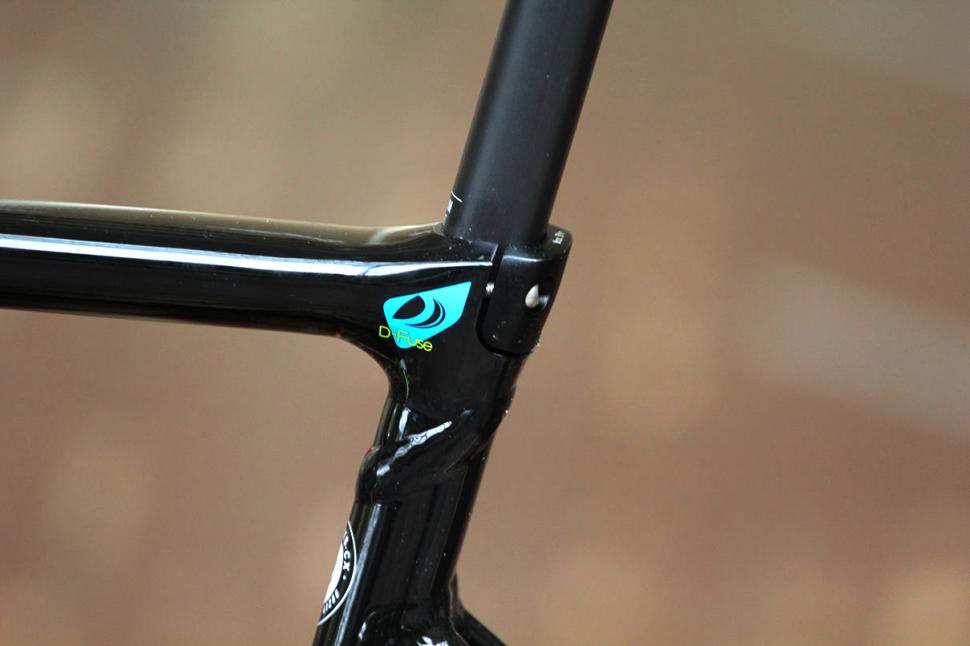

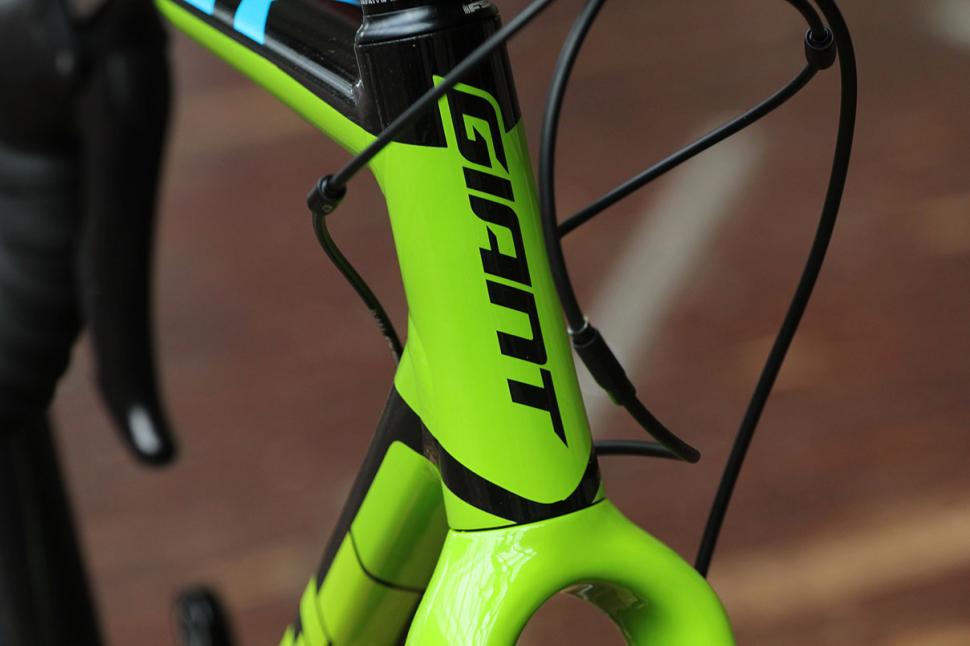

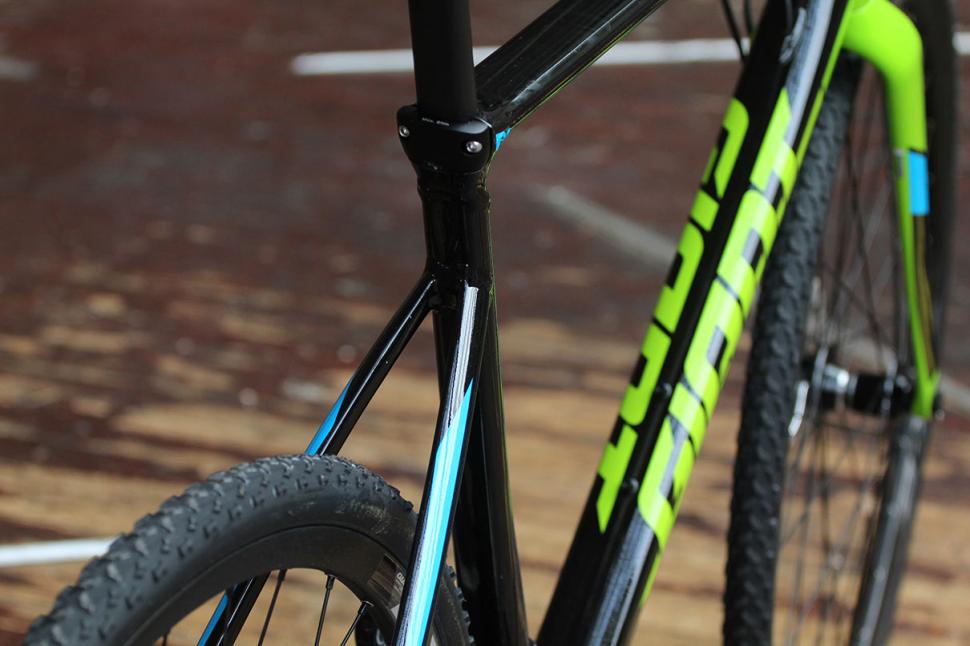
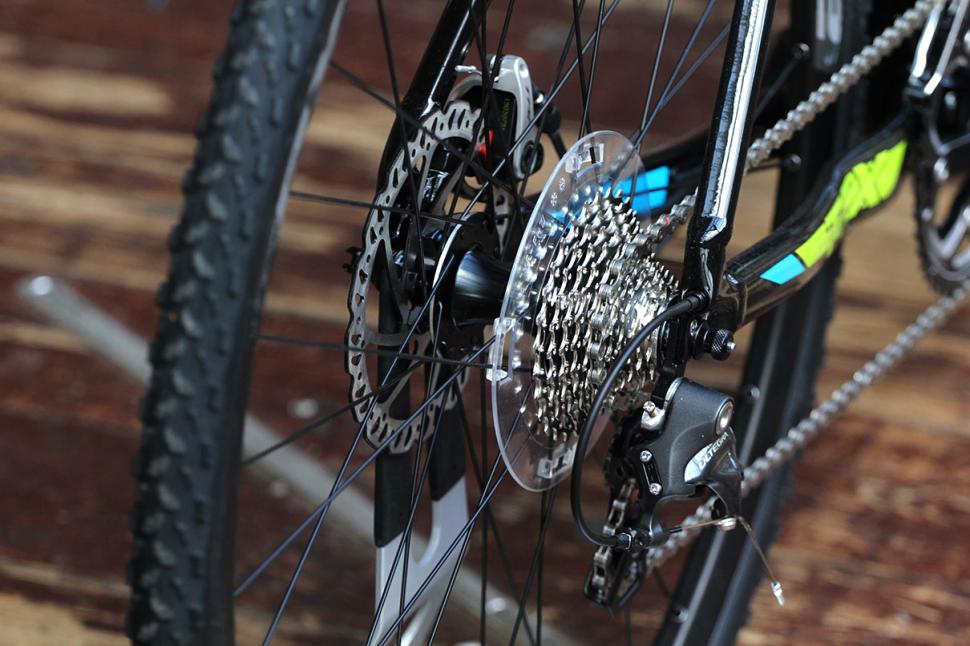

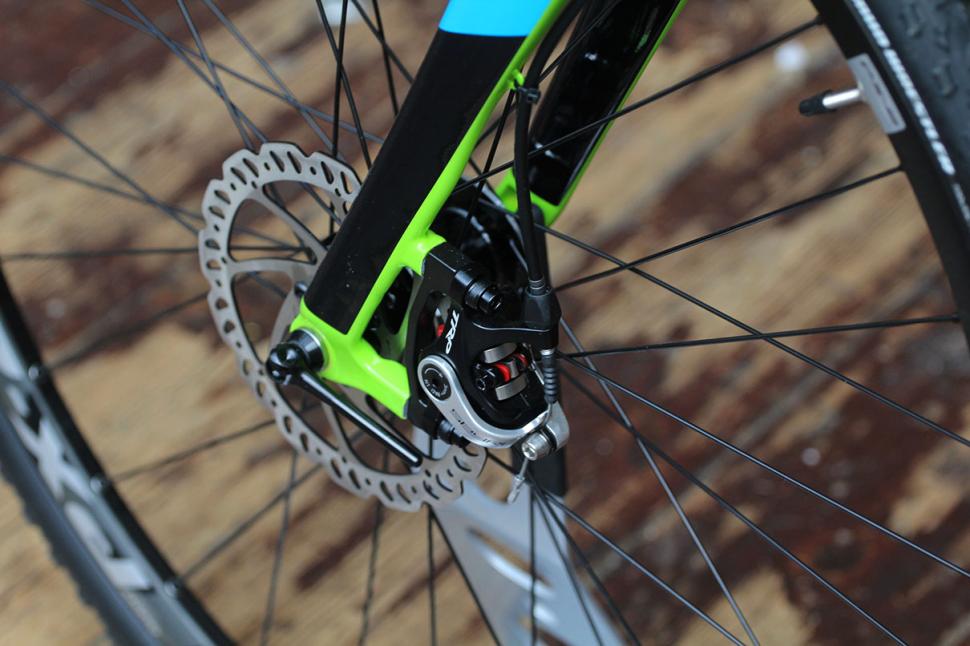
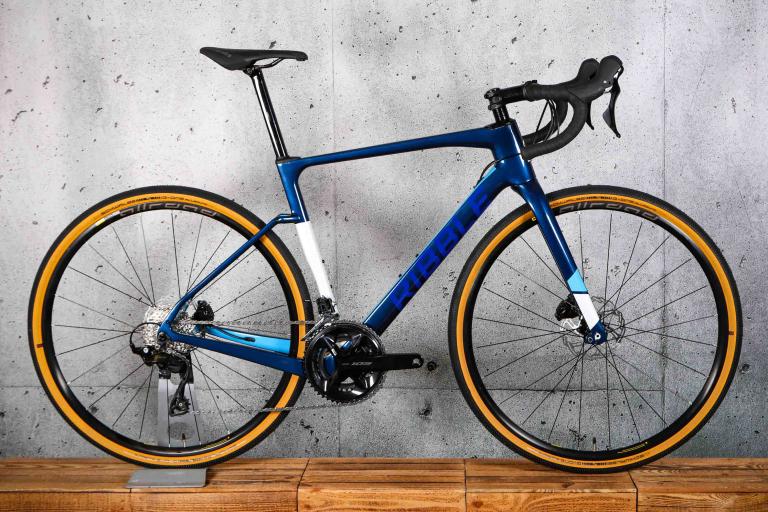
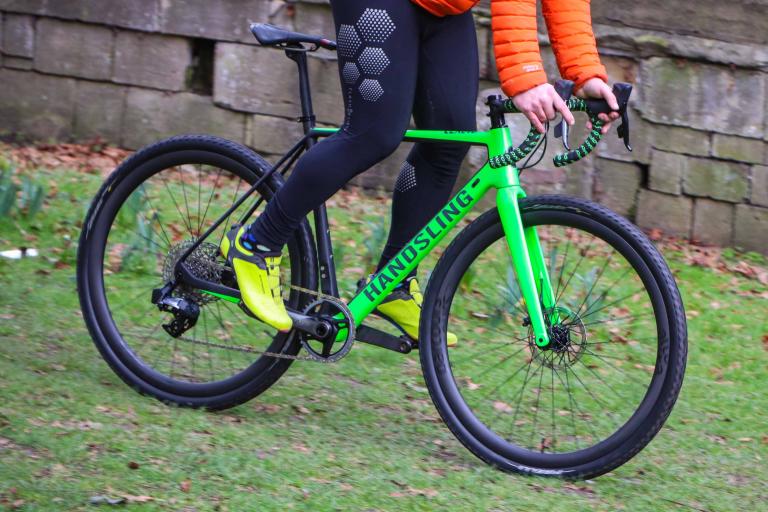

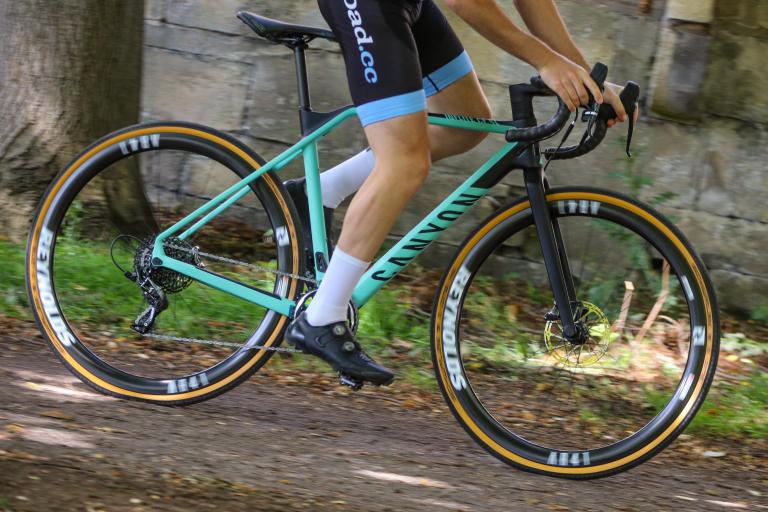
Add new comment
2 comments
....I love the colour!
I've got the 2014-model TCX SLR 2, which is basically the same frame with a different non-OverDrive2 fork, QRs front and rear, and equipped with 10-speed Shimano 105 5700.
Mounting full-length fenders on the frame is a little troublesome because there's no bridge on the seat stays or chain stays. My workaround was zip ties and a modified rear reflector bracket.
Overall though, great bike and awesome Spyre brakes. I've taken mine to the trail center on its stock mud tires and it did pretty well. Nowadays mine sees duty as an all-weather road bike, and I've taken it to a 200 km audax.